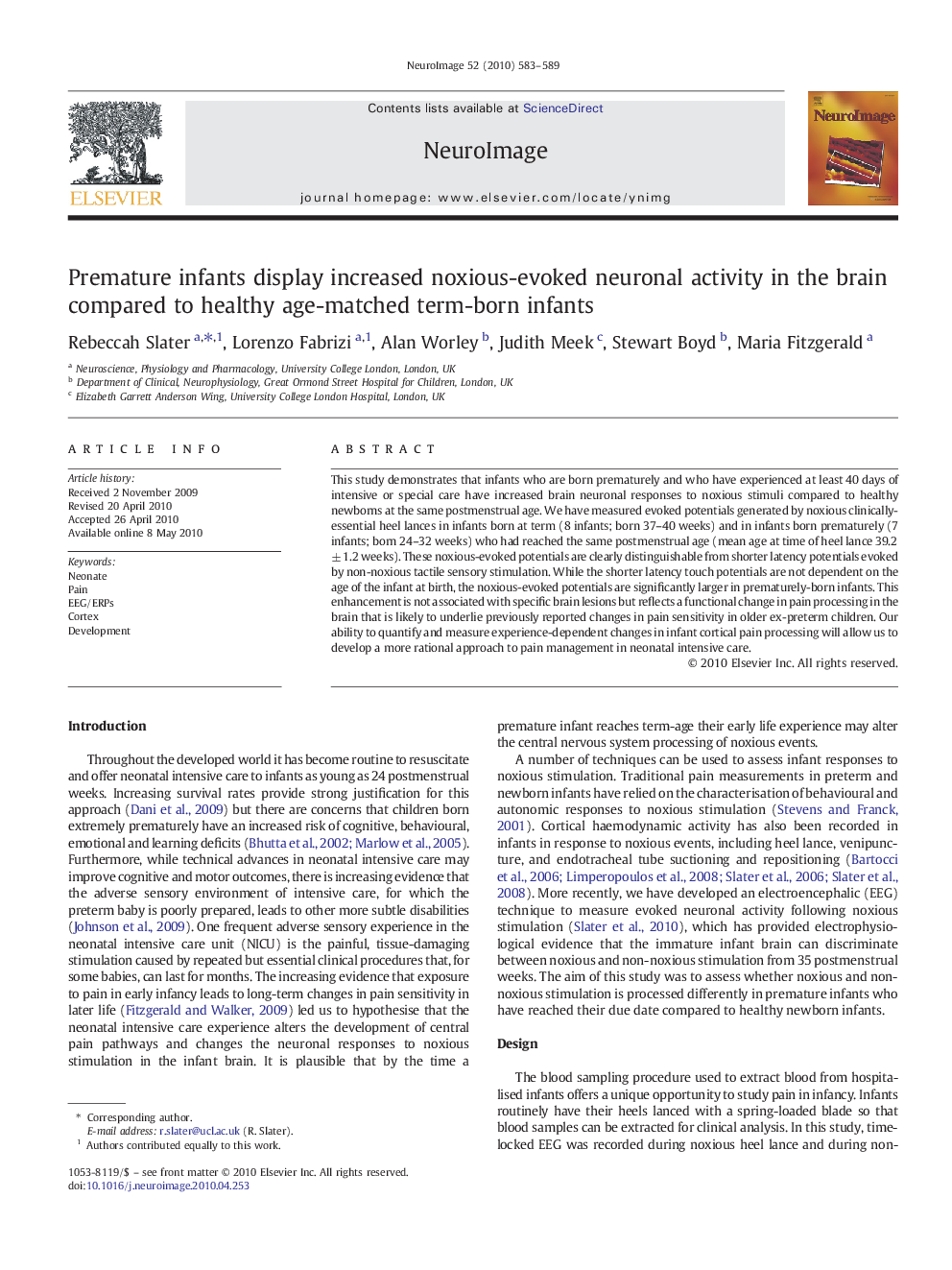| Article ID | Journal | Published Year | Pages | File Type |
|---|---|---|---|---|
| 3072185 | NeuroImage | 2010 | 7 Pages |
This study demonstrates that infants who are born prematurely and who have experienced at least 40 days of intensive or special care have increased brain neuronal responses to noxious stimuli compared to healthy newborns at the same postmenstrual age. We have measured evoked potentials generated by noxious clinically-essential heel lances in infants born at term (8 infants; born 37–40 weeks) and in infants born prematurely (7 infants; born 24–32 weeks) who had reached the same postmenstrual age (mean age at time of heel lance 39.2 ± 1.2 weeks). These noxious-evoked potentials are clearly distinguishable from shorter latency potentials evoked by non-noxious tactile sensory stimulation. While the shorter latency touch potentials are not dependent on the age of the infant at birth, the noxious-evoked potentials are significantly larger in prematurely-born infants. This enhancement is not associated with specific brain lesions but reflects a functional change in pain processing in the brain that is likely to underlie previously reported changes in pain sensitivity in older ex-preterm children. Our ability to quantify and measure experience-dependent changes in infant cortical pain processing will allow us to develop a more rational approach to pain management in neonatal intensive care.
